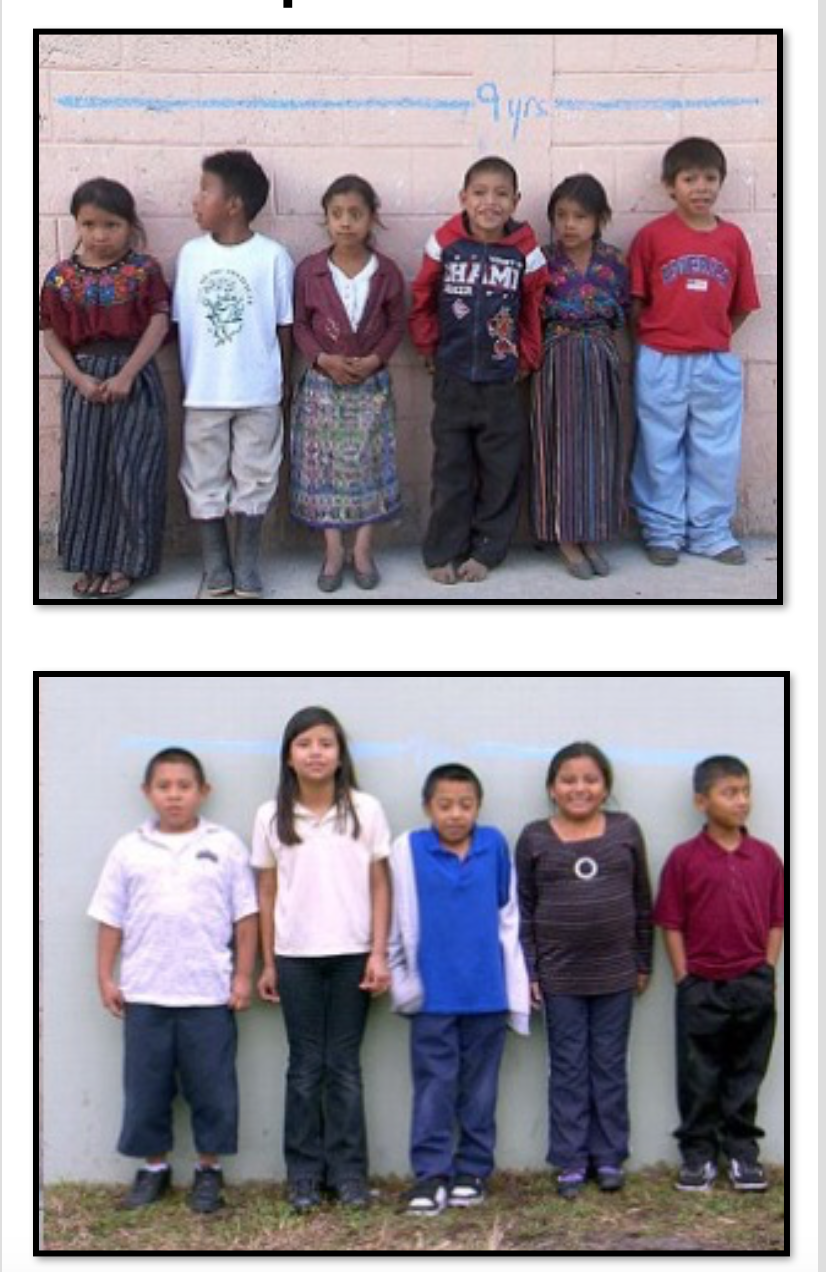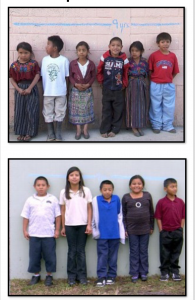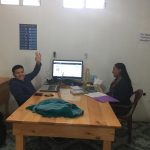One of the big focuses of Peace Corps Guatemala’s Maternal and Child Health Program is addressing Guatemala’s high chronic malnutrition rate among children, which is the highest in Latin America and the fourth highest in the world. This is a multi-factorial problem stemming in part from the fact that Guatemala has one of the most unequal societies in the world in terms of income, and because many indigenous Guatmalans subsist on little more than corn tortillas, coffee, and occasionally frijoles, meaning that children often lack sources of protein in their diet and don’t get enough fruits and vegetables. Below is a picture of two groups of children of Guatemalan ancestry with the same age of 9 years. The children on the bottom are living in the U.S., and the ones in the top frame live in Guatemala and eat a much poorer diet. The blue line on the wall indicates how tall the average nine-year-old should be.
The good news is that through education most Guatemalan parents, even those of very limited means, can learn how to add sources of protein, fruits and vegetables to their diet and those of their children and put this knowledge into daily practice. Improved nutrition can safeguard the development of children as chronic malnutrition can often leads to stunting of both a child’s physical and intellectual development. Chronic malnutrition in adults is especially severe in pregnant women, and can put a pregnant woman’s life at risk and increase the risk that a child with be born undernourished. Therefore MCH (Maternal and Child Health) Peace Corps Volunteers are also working to improve the nutritional status of women of child-bearing age, and pregnant women in Guatemala.
7,105 total views, 3 views today







Comments by Mateo
Peace Corps Guatemala: Daily Activities 3: Women’s Group Handwashing Charla
Hi Emilio, I like your blog! I will send a postcard to ...